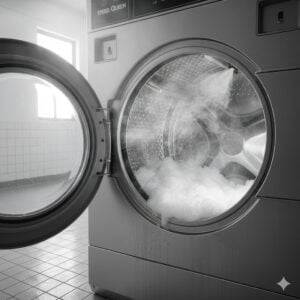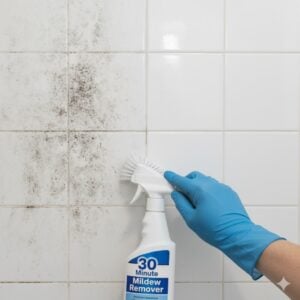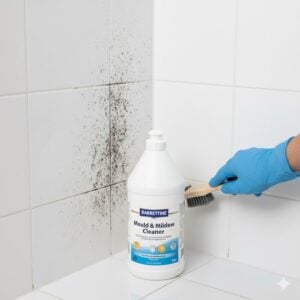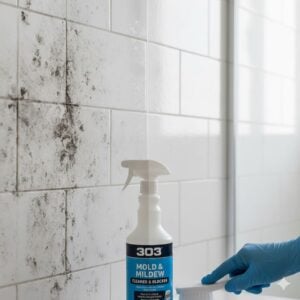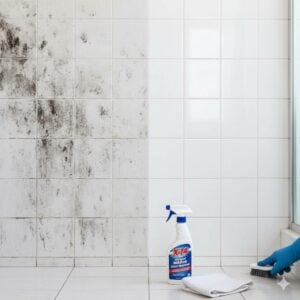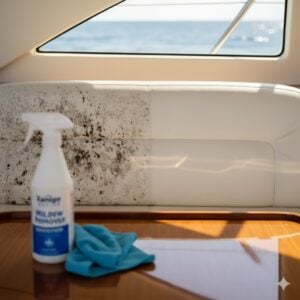Living in the UAE means dealing with heat, humidity, and lots of air conditioning—and while that might feel normal, it also creates the perfect conditions for mold growth in your home. What starts as a small spot near your bathroom ceiling can quickly spread across walls, furniture, and even inside your air vents.
And here’s the tricky part: mold doesn’t always show up where you can see it. Sometimes, you’ll notice a musty smell. Other times, it’s sneezing, coughing, or an unexplained rash. By the time you spot black or green patches, the mold has often been growing for days or even weeks.
In this guide, we’ll explain what causes mold growth, how fast it can spread, signs to watch for, and what you can do to stop it. If you live in Dubai, Abu Dhabi, Sharjah—or anywhere with AC and high humidity—this info is especially important.
Table of Contents
Toggle1. What Is Mold Growth and Why It Happens
Mold is a living fungus, and it’s more common than most people think. Its tiny spores float in the air all around us, both indoors and outdoors. These spores don’t cause trouble until they land on a surface that gives them what they need: moisture, warmth, and something to feed on.
Once that happens, mold starts to grow—and fast. It can form colonies on:
- Painted walls and ceilings
- Wooden shelves or baseboards
- Tile grout and silicone sealant
- Clothing, curtains, and upholstery
- Even inside AC ducts or behind wallpaper
In UAE homes, mold usually starts after water leaks, high indoor humidity, or condensation from air conditioning units. Bathrooms without good ventilation are especially prone. If you’ve ever noticed black spots near your bathtub or AC vent, that’s likely mold in action.
2. The Stages of Mold Growth (And How Fast It Happens)
Mold growth doesn’t take weeks to appear—it can start forming in just 24 to 72 hours under the right conditions. That’s why it’s important to act fast when there’s moisture or water damage.
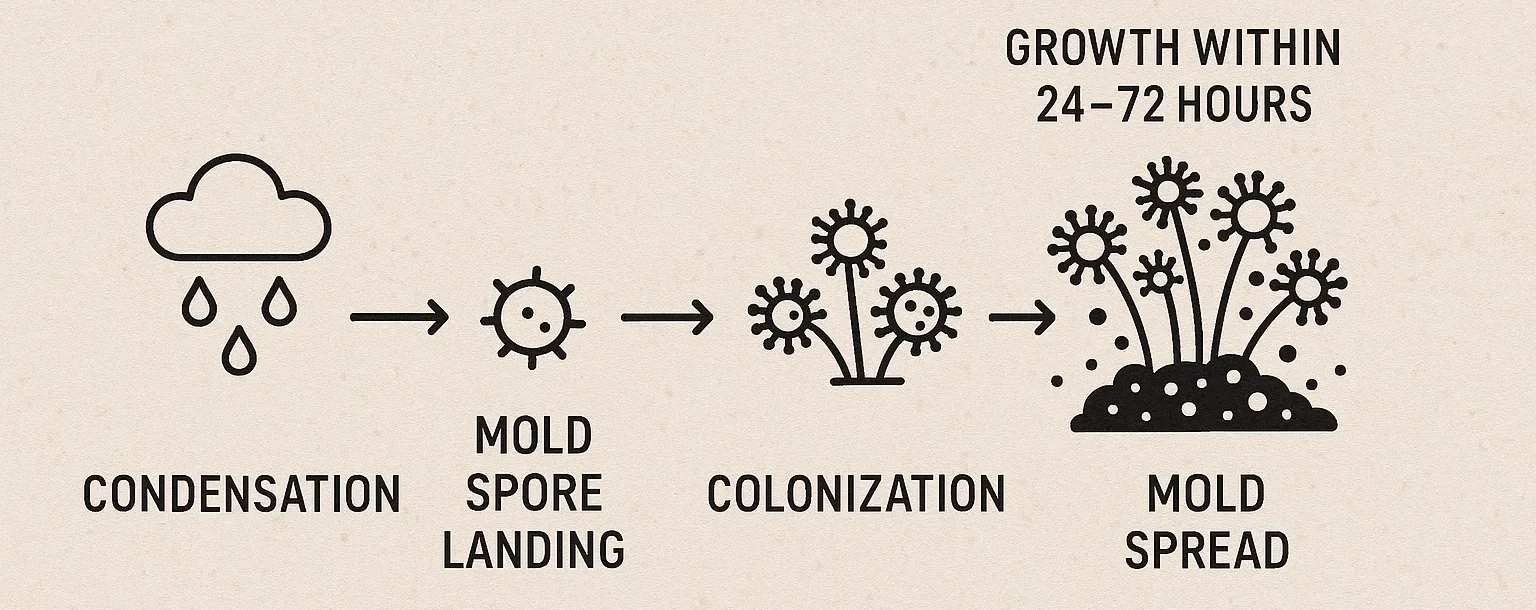
Here’s how mold develops step-by-step:
- Spore landing: Invisible mold spores float in the air and settle on a damp surface.
- Activation: With enough moisture and warmth, the spores begin to sprout tiny root-like structures called hyphae.
- Colonization: Mold grows into visible patches, feeding on the surface (like paint or fabric).
- Spreading: Spores release into the air again, finding new spots to grow—this can happen room to room.
In places like Dubai or Sharjah, where indoor moisture often builds up from showers, cooking, and running air conditioners, mold spreads even faster. That’s why many homeowners are surprised to find it returning even after cleaning—because the conditions for growth haven’t changed.
3. Signs That Mold Is Growing in Your Home
Mold doesn’t always knock on the door and announce its arrival. Often, the signs are subtle at first—especially when the growth is happening behind walls or inside ventilation systems. Recognizing these early clues can help you prevent serious damage and health problems.
Here are some of the most common signs of mold growth in UAE homes:
- Musty or earthy smell: This is usually the first warning. It smells damp, stale, or a bit like wet socks—even when everything looks clean.
- Visible dark spots: Black, green, or even white fuzzy patches on ceilings, tiles, or walls. Pay special attention to corners, bathrooms, and around AC units.
- Peeling paint or bubbling walls: When mold grows underneath paint or wallpaper, it causes surface warping or blistering.
- Water stains: Yellow or brown stains on ceilings or walls could signal a previous leak and hidden mold behind the surface.
- Health symptoms: Sneezing, headaches, itchy skin, and fatigue—especially if they get worse at home and improve when you’re away.
Sometimes, residents live with these signs for months without realizing mold is behind them. If you notice a combination of smells, spots, and health symptoms, it’s time to act.
4. What Makes Mold Worse in UAE Homes
The UAE’s climate is ideal for mold growth, especially in modern buildings that are tightly sealed for insulation. While good for keeping heat out, this also traps moisture inside. Add daily AC use, closed windows, and bathroom steam—and you’ve got the perfect storm for mold to thrive.
Here are the biggest mold triggers we see in local homes:
- High humidity: Indoor humidity levels above 60% provide all the moisture mold needs to grow.
- Condensation from AC units: Cold air meeting warm surfaces causes droplets to form, often near vents and ceilings.
- Closed windows and poor ventilation: Without airflow, moisture from showers, cooking, and even breathing lingers indoors.
- Leaky plumbing or roof damage: Even a small drip can lead to large mold patches hidden behind the wall.
- Laundry drying indoors: Hanging wet clothes inside adds to indoor moisture and raises humidity levels quickly.
Apartment layouts that lack bathroom exhaust fans, villa basements, and older AC systems are especially vulnerable. Without proper airflow, mold has everything it needs to grow—and it often returns no matter how many times you clean it.
5. What You Can Do to Stop Mold Growth
Stopping mold growth starts with breaking the cycle: reduce moisture, improve airflow, and fix hidden leaks. The good news? You don’t need to wait until the problem gets out of hand. Here are a few things you can do today:
- Open windows when possible: Letting fresh air in helps dry out moisture and reduce spore buildup.
- Use dehumidifiers: Especially in bedrooms, kitchens, or laundry rooms—keeping humidity below 55% is ideal.
- Wipe down moisture-prone areas: Sinks, bathroom tiles, and AC vents should be cleaned regularly.
- Clean your AC filters: Dirty filters trap moisture and circulate spores—clean them every 2–4 weeks.
- Fix leaks immediately: A small plumbing drip can fuel massive mold growth in just days.
- Apply anti-mold paint or sealant: Especially in bathrooms or around AC vents where mold tends to come back.
But here’s the catch—if the mold keeps returning or the smell won’t go away, the source may be deeper than what’s visible. That’s when calling a professional makes all the difference.
At Bio-On UAE, we help homeowners across Dubai, Abu Dhabi, Sharjah, and the Northern Emirates stop mold at the source. Our certified team uses eco-safe methods and advanced detection tools to locate hidden mold and eliminate it permanently.
Need expert help? Just click the contact button on the right-middle of this post to book a mold inspection today.
Conclusion
Mold growth is more than just an eyesore—it’s a living organism that spreads fast, damages your property, and silently affects your health. In the UAE, where humidity and air conditioning are a part of daily life, preventing mold isn’t just smart—it’s essential.
By staying alert to early signs, managing indoor moisture, and acting quickly, you can stop mold before it takes over. And when it’s already spreading, don’t wait. Let Bio-On UAE handle it safely and professionally—so your home stays clean, safe, and truly breathable.








